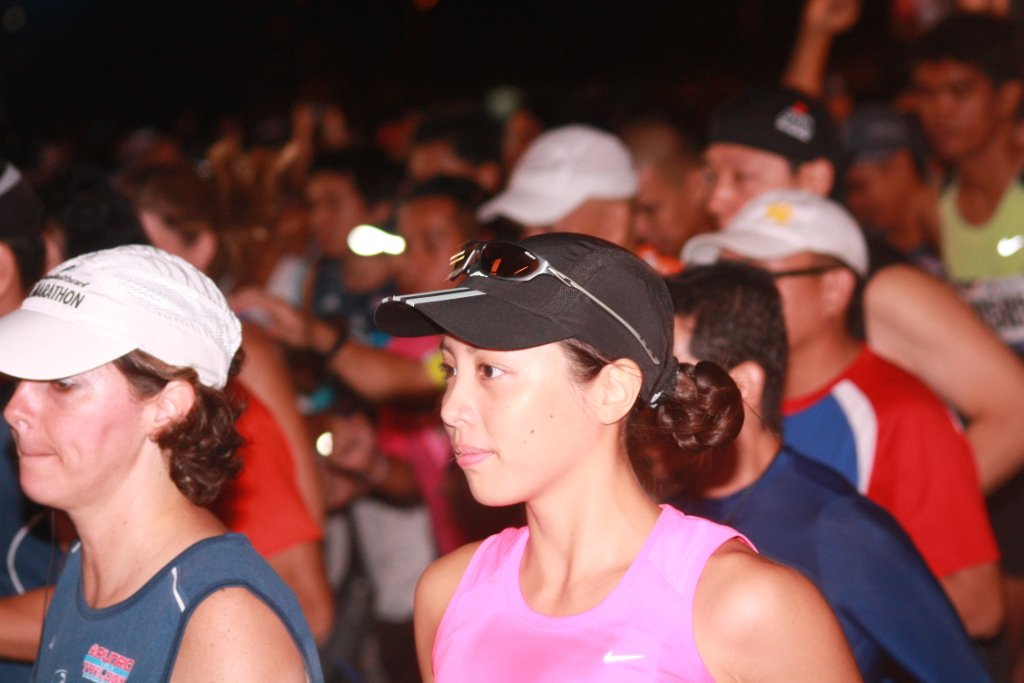Whenever someone tells me they have started running, I greet the news with pleasure because it’s such a great sport to take up. But if you’ve only just jumped off the couch, it’s important to take the proper steps to make sure you can keep running. Way too many people have started too fast and done too much too soon, leading to injury and burn-out.
One of the easiest ways to stay on track is to set a goal, and for many beginners a 5K run is ideal. The distance is long enough to be a challenge for those just taking up running, but short enough to be attainable with a few weeks of training.
Here is your road map to training for your first 5K!
Step 1: Get your physician’s go-signal.
It’s best to consult your doctor whenever you embark on a new exercise regimen, particularly if you have a history of cardiac, respiratory, or joint problems that can crop up when you get out there and get your body moving. The benefits of exercising far outweigh the risks, but a proper health assessment can give you a good starting point and help you set appropriate goals, such as how long it will take to become fit enough for your first 5K run.
If you’re starting from zero — you haven’t done any physical exercise in at least a year — it’s advisable to start by building up the amount of exercise you do. It’s unrealistic to get out there and say you’re going to run non-stop for thirty minutes. Your body and your heart will need some time to adjust to the physical load running will put them through.
Walking is a great way to build stamina (the ability to sustain an activity), and if you walk briskly enough you can also raise your heart rate to help make your heart stronger.
Step 2: Follow a running program.
So many people have been in your situation of beginning to run. To get ready for 5K, they followed a basic Couch to 5K program. Such training programs are done three times a week over the course of eight weeks, but you are also free to train for longer if you find they progress too quickly for your level of fitness.
These programs will bring your fitness up from walking, to a combination of walking and jogging, to finally running the whole 5K. Each session starts and ends with walking for warm-up and cool-down and the main body of the workout lasts for approximately 20 minutes, just the right amount of activity to challenge your body without overly tiring you out. You will still feel in control and will end the session motivated to do better next time.
You can choose to measure your sessions by time or by distance, but when starting from zero, any period of exercise helps, regardless of how far you actually go.
Remember to space the sessions out on alternate days to allow your body to recover. As you become fitter, running will start feeling easier and you may be tempted to do more. Just remember that you become stronger and faster not during the workout but after it, when the body rebuilds itself to adapt to the challenge.
Step 3: Keep track.
Eight weeks or two months is a long time. You will want to start a running diary and note down how much you were able to do and how you felt during and after the session. When motivation starts to wane midway through the training program, you can take a look back at your first sessions and see how far you’ve come!
Also, if you start feeling overly tired or poor during the program, you can backtrack to the cause of your tiredness so that when you recover you can better gauge your body’s ability to handle your workouts.
You can opt to go the pencil-and-paper route, or try apps like Strava or RunKeeper on your smartphone.
Step 4: Fuel properly.
If your goal in starting to run is to get fit and lose weight, you should be aware that you may get ravenous after running. Instead of bingeing on large amounts of junk food, satisfy your post-run hunger with a piece of fruit and a slice of whole wheat toast with nut butter, and lots of water. It’s important to eat properly still, because you can never outrun a bad diet.
Also, watch out for “energy drinks” which are full of sugar. You won’t need to consume these due to the short length of time you’re out exercising. Instead, just use water to hydrate.
You’ll find that eating better food helps you feel better as well when training.
Step 5: Be better than you were yesterday.
It’s human nature to compare yourself with others, and this also holds true when you start running. You may look at others who may have started along with you but seem to be getting fitter or faster much sooner. Or you might watch some elite runners and think it’s hopeless for you to get to that level.
The only important thing you need to look at is whether or not you are improving compared to how you used to be. Someone able to walk 5 minutes at a time is in a much better place than when they used to be glued to a couch with only their fingers getting exercise on the remote control.
Focusing on the improvements regardless of how long you take to get them keeps you in a positive frame of mind and better able to continue your training until you can conquer that first 5K. All it takes is a single step to start this journey to a better you.



salamat po ms noelle hehe sana mkatakbo rin ako ng marathon katulad nyo :))